
Cronaca Sovversiva (Subversive Chronicle) was an Italian-language, United States-based anarchist newspaper associated with Luigi Galleani from 1903 to 1920. It is one of the country's most significant anarchist periodicals. [1]

Cronaca Sovversiva (Subversive Chronicle) was an Italian-language, United States-based anarchist newspaper associated with Luigi Galleani from 1903 to 1920. It is one of the country's most significant anarchist periodicals. [1]
Prior to founding Cronaca Sovversiva, Luigi Galleani became involved in anarcho-communist activism beginning in the 1880s and showed a predilection for speaking and writing convincingly on the topic. After escaping an Italian prison sentence, he traveled through to Paterson, New Jersey, in 1901. After being wounded during the 1902 Paterson silk strike and charged with incitement to riot, he first escaped to Canada before settling in Barre, Vermont, under an assumed name among Italian quarriers. There he began publishing the Italian-language anarchist newspaper Cronaca Sovversiva in 1903. [2]
The newspaper was banned from Italy in October 1915, [3] and from the United States Mail in June 1917. He continued to print the newspaper and distribute it cross-country via Railway Express and a network of supporters who delivered it locally. [4]
Anarchist communism is a political philosophy and anarchist school of thought that advocates communism. It calls for the abolition of private property but retention of personal property and collectively-owned items, goods, and services. It supports social ownership of property and the distribution of resources "From each according to his ability, to each according to his needs".
Propaganda of the deed is specific political direct action meant to be exemplary to others and serve as a catalyst for revolution.
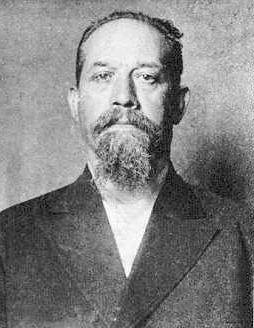
Luigi Galleani was an Italian insurrectionary anarchist best known for his advocacy of "propaganda of the deed", a strategy of political assassinations and violent attacks.

Thomas William Hardwick was an American politician from the U.S. state of Georgia who served as governor of Georgia, a United States Senator from Georgia, a member of the United States House of Representatives from Georgia, and a member of the Georgia House of Representatives.
In the United States, anarchism began in the mid-19th century and started to grow in influence as it entered the American labor movements, growing an anarcho-communist current as well as gaining notoriety for violent propaganda of the deed and campaigning for diverse social reforms in the early 20th century. By around the start of the 20th century, the heyday of individualist anarchism had passed and anarcho-communism and other social anarchist currents emerged as the dominant anarchist tendency.

The Preparedness Day Bombing was a bombing in San Francisco, California, United States, on July 22, 1916, of a parade organised by local supporters of the Preparedness Movement which advocated American entry into World War I. During the parade a suitcase bomb was detonated, killing 10 and wounding 40 in the worst terrorist attack in San Francisco's history.

A series of bombings were carried out or attempted by Galleanists from April through June 1919. The targets included anti-immigration politicians, anti-anarchist officials, and prominent businessmen, as well as a journalist and a church. Almost all of the bombs were sent by mail. The bombings were one of the major factors contributing to the First Red Scare. Two people were killed, including one of the bombers, and two injured.
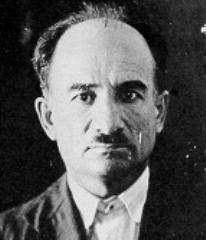
Mario Buda (1883–1963) was an Italian anarchist active among the militant American Galleanists in the late 1910s and best known for being the likely perpetrator of the 1920 Wall Street bombing, which killed 40 people and injured hundreds. Historians implicate Buda in multiple bombings, though the documentary evidence is insufficient to prove his responsibility.

The United States Immigration Act of 1918 was enacted on October 16, 1918. It is also known as the Dillingham-Hardwick Act. It was intended to correct what President Woodrow Wilson's administration considered to be deficiencies in previous laws, in order to enable the government to deport undesirable aliens, specifically anarchists, communists, labor organizers, and similar activists.

Andrea Salsedo was an Italian anarchist whose death caused controversy as it was caused by a suspicious fall from the Justice Department's Bureau of Investigation (BOI) offices on 15 Park Row in New York City. Depending on the source, his death was either a suicide or a homicide committed by detaining officers; nevertheless, the case was widely debated both for its unclear nature and for its consequences on the Bureau and was one of the premises of the Sacco and Vanzetti case.
Insurrectionary anarchism is a revolutionary theory and tendency within the anarchist movement that emphasizes insurrection as a revolutionary practice. It is critical of formal organizations such as labor unions and federations that are based on a political program and periodic congresses. Instead, insurrectionary anarchists advocate informal organization and small affinity group based organization. Insurrectionary anarchists put value in attack, permanent class conflict and a refusal to negotiate or compromise with class enemies.
Ersilia Cavedagni was an Italian-American anarcha-feminist activist, writer, and editor.
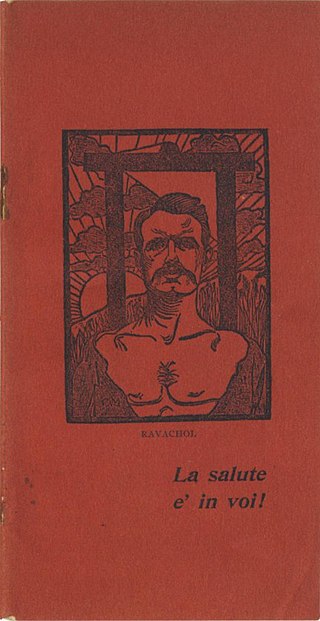
La Salute è in voi! was an early 1900s bomb-making handbook associated with the Galleanisti, followers of anarchist Luigi Galleani, particularly in the United States. Translated as "Health Is in You!" or "Salvation Is within You!", its anonymous authors advocated for impoverished workers to overcome their despair and commit to individual, revolutionary acts. The Italian-language handbook offered plain directions to give non-technical amateurs the means to build explosives. Though this technical content was already available in encyclopedias, applied chemistry books, and industrial sources, La Salute è in voi wrapped this content within a political manifesto. Its contents included a glossary, basic chemistry training, and safety procedures. Its authors were likely Galleani and his friend Ettore Molinari, a chemist and anarchist.

Galleanisti are followers or supporters of the insurrectionary anarchist Luigi Galleani, who operated most notably in the United States following his immigration to the country. The vast majority of Galleanisti or Galleanists were similarly poor and working class Italian immigrants or Italian Americans, and especially Italian anarchists and Italian immigrants or Italian-Americans involved in the labor movement of the time. Galleanists remain the primary suspects in a campaign of bombings between 1914 and 1920 in the United States.
Gabriella (Ella) Segata Antolini (1899–1984) was an Italian–American anarchist activist.
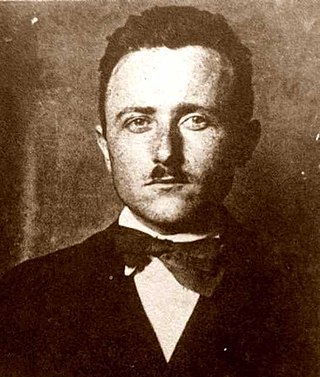
Raffaele Schiavina was an Italian anarchist newspaper editor and writer also known by the pseudonyms Max Sartin, and Bruno. From 1928 to 1970 he edited and wrote for the US-based Italian-language anarchist newspaper L’Adunata dei Refrattari.
Carlo Valdinoci was an Italian Galleanist anarchist based in the United States and the publisher of Luigi Galleani's Cronaca Sovversiva. He is believed to have been involved in multiple Galleanist plots.
The Youngstown dynamite plot was a foiled attempt by Galleanist anarchists to move a case of dynamite by train from Steubenville, Ohio, to Chicago, from January 17–18, 1918. The 18-year-old Gabriella "Ella" Antolini Segata, part of the Italian Galleanist circle, was caught by a suspicious train porter. The dynamite was potentially en route to Milwaukee, where anarchists had been squaring off with police in a series of counter-retaliatory attacks stemming from the September 1917 Bay View incident. Antolini Segata was imprisoned for 18 months and the case was a big break for the Bureau of Investigation agent Rayme Weston Finch, who would come to lead investigations against the Galleanists.
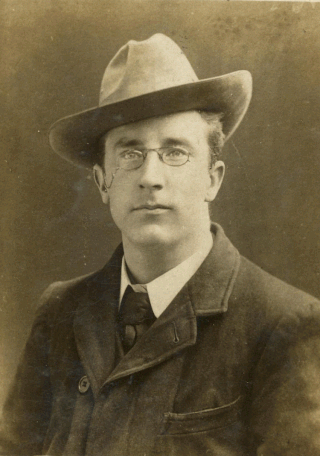
William MacQueen was a British anarchist, trade unionist, newspaper editor and public speaker.
A strike of silk dyers in Paterson, New Jersey, from April to June 1902, spilled over into the wider New Jersey textile industry.
![]() Media related to Cronaca Sovversiva at Wikimedia Commons
Media related to Cronaca Sovversiva at Wikimedia Commons